Light yet flavorful, this delicious Salmon in Foil recipe is a perfect meal for a busy weeknight dinner. This quick dish takes 20 minutes from start to finish with easy clean-up! Inspired by the Japanese drama Midnight Diner: Tokyo Stories.
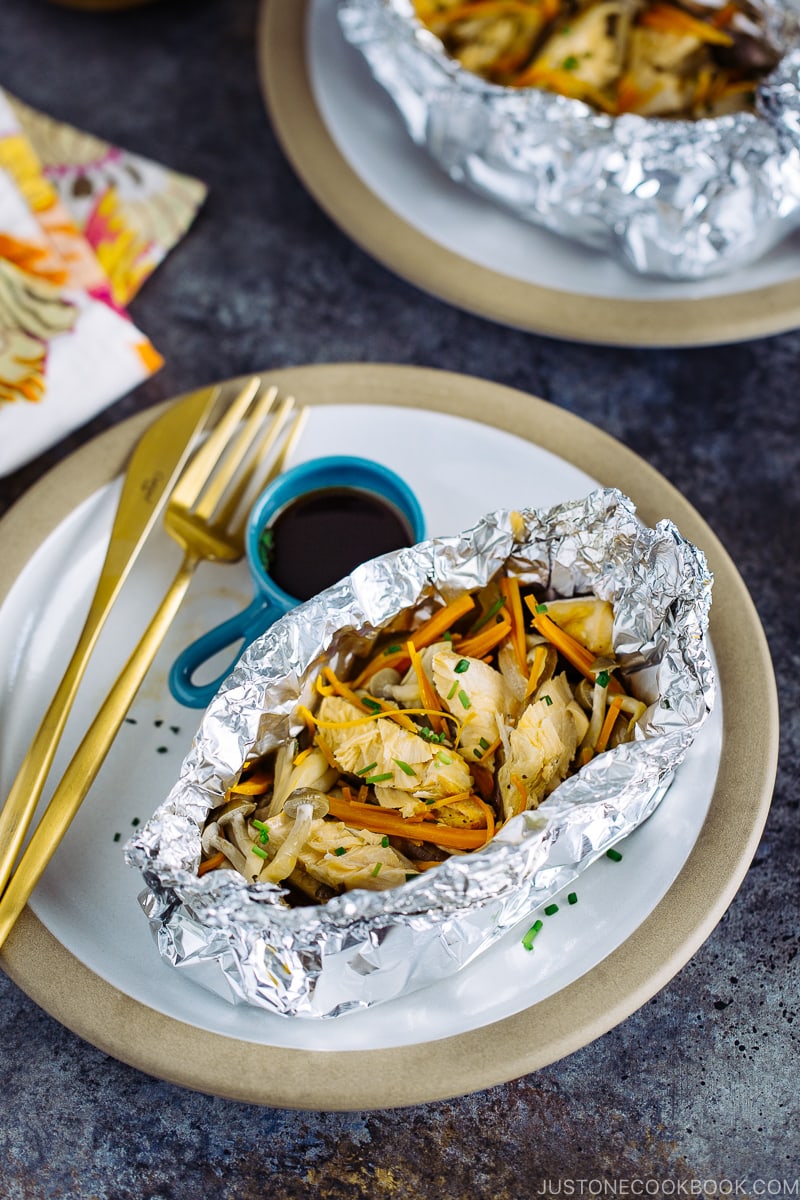
Salmon in Foil, or SHA-ke no Hoiru Yaki (鮭のフォイル焼き), is a fast, simple and delicious dish. When I was growing up, my mom would serve a variety of ‘salmon in foil’ for dinner when she was short on time. All you have to do is toss a few ingredients into a foil, wrap it up like a parcel and let it steam over in a frying pan. In no time at all, you have a healthy meal that your family will love.
Salmon and Mushrooms – Netflix “Midnight Diner: Tokyo Stories” Season 2
You can find this Salmon in Foil dish featured on the popular Netflix® show – Midnight Diner: Tokyo Stories (Season 2, Episode 6). In the show, this dish is called “Salmon and Mushrooms” as they include both salmon and mushrooms.

Salmon in Foil is rather a home-cooked dish in Japan. You rarely find it on the menu at restaurants or Shokudo (食堂) diners. So let’s make it at home!
Why You Should Try This Salmon in Foil Recipe
1. Moist and tender salmon
No one likes dry salmon. Cooking the salmon in foil is all about retaining the moisture and tenderness inside. This method, when cooked over low heat, also ensures a proper steaming process. It locks in all the delicious juice, resulting in a lush and delicate salmon!
2. Versatile recipe
The recipe never gets old in my family because you can switch up the veggies and the seasonings. Salmon pairs well with a range of vegetables, so you can always include seasonal greens to make things interesting.
I included some of my suggestions below. However, I personally love this salmon, mushrooms, and veggie combination. They work very well together with simple seasonings.
3. Quick cook and easy cleanup
As opposed to the oven method, there is no pre-heating required. You can literary cook the salmon in 12 minutes. It’s that FAST! If you can wrap up all the ingredients in foil in 8 minutes, this is a 20-minute meal!!
Since everything is tucked inside the foil, it makes the easiest cleanup. There is also no oil or sauce, so you don’t even have to clean the stove or the frying pan.
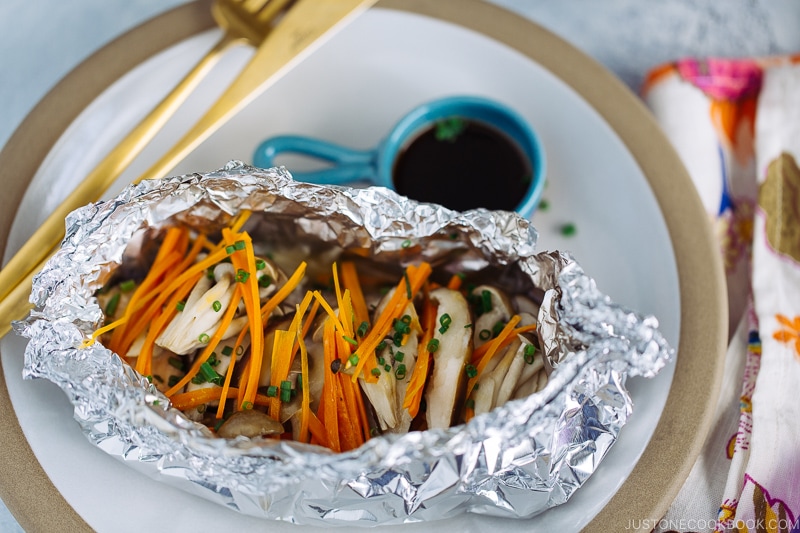
Variations for Salmon in Foil
If you enjoyed this recipe and wanted to try out other variations, here are more suggestions for your next dish.
Ingredients
- Enoki mushrooms
- King oyster mushrooms
- Green leafy vegetables (cut vegetables into julienned strips so they will cook fast)
Seasonings
Instead of suggested condiments in the recipe, you can try the following seasonings.
- Butter + Lemon
- Butter + Garlic
- Butter + Shio Koji
- Butter + Soy Sauce
- Butter + Miso
- Butter + Ponzu
- Mayo + Miso
- Mayo + Soy sauce
- Miso + Mirin
- If using salty seasonings, add in sugar, mirin, etc.
My favorite way to enjoy this dish is to drizzle on Homemade Ponzu.
Do We Add Water to the Frying Pan?
I thought some of you may wonder about this – don’t we need to add water to steam the fish? The answer is no; the salmon will be steamed inside the foil, so water is not necessary.
But how about the frying pan? Will it be damaged by the heat? My pan has never damaged by this cooking method. If you are worried, you can add water but you need to cook an extra 2 minutes or longer. The water in the pan distributes gentle heat so it requires more time for the onion to cook through.
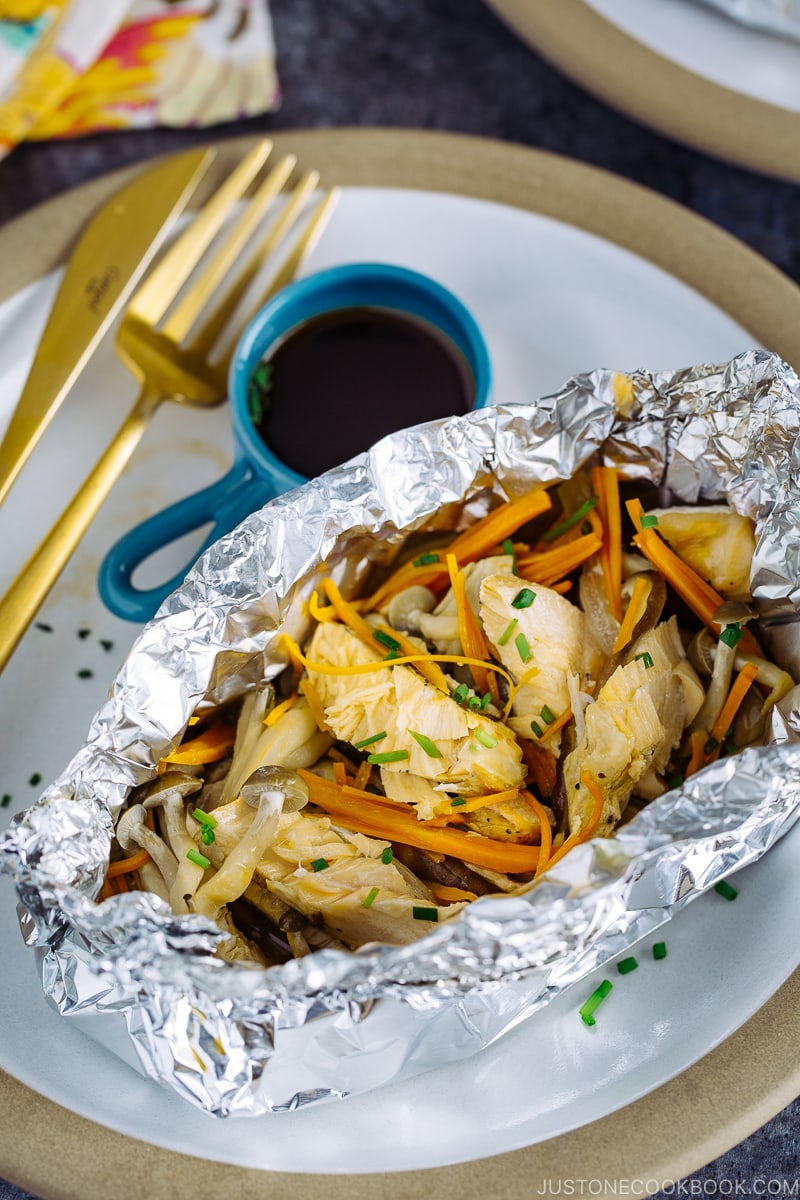
Itadakimasu!
With layers of textures and flavors, this salmon in foil is predictably foolproof, every single time. Serve with steamed rice and miso soup, and a side of salad if you have extra time. With this recipe in your back pocket, you will have more reasons to cook healthy meals for yourself and your loved ones.
Other Quick and Easy Recipes
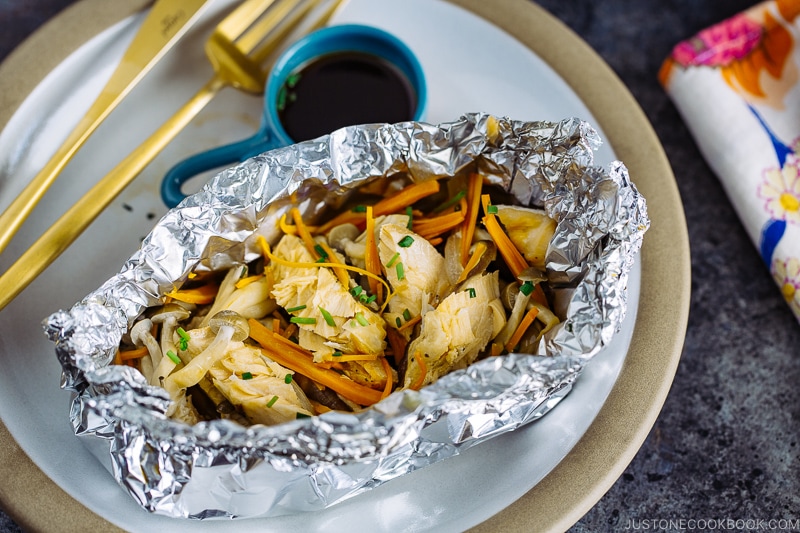
Wish to learn more about Japanese cooking? Sign up for our free newsletter to receive cooking tips & recipe updates! And stay in touch with me on Facebook, Pinterest, YouTube, and Instagram.
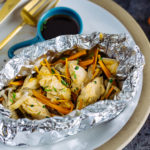
Salmon in Foil
Video
Ingredients
- 2 skin-on salmon fillets (8.5 oz, 240 g total; I used thin-cut salmon from a Japanese grocery store)
- Diamond Crystal kosher salt
- freshly ground black pepper
- ½ onion (3 oz, 85 g)
- 3 oz carrot (2 inches, 5 cm)
- 1.8 oz shimeji mushrooms (½ package)
- 2 shiitake mushrooms
- 1½ Tbsp unsalted butter (divided)
- 1 Tbsp sake (divided)
For Serving
- 2 leaves chives
- 2 Tbsp ponzu or soy sauce (for drizzling; you can make my homemade ponzu recipe)
Instructions
- Gather all the ingredients.
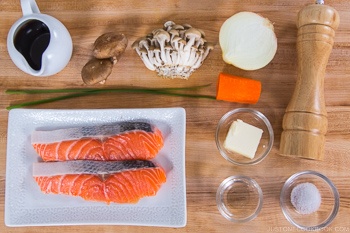
To Prepare the Ingredients
- Sprinkle Diamond Crystal kosher salt and freshly ground black pepper on both sides of 2 skin-on salmon fillets.
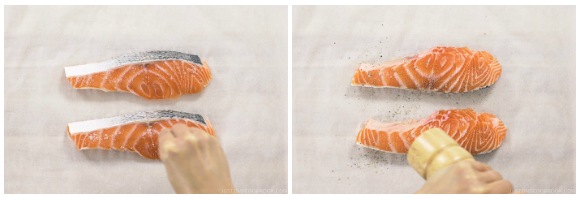
- Thinly slice ½ onion and cut 3 oz carrot into julienne strips.
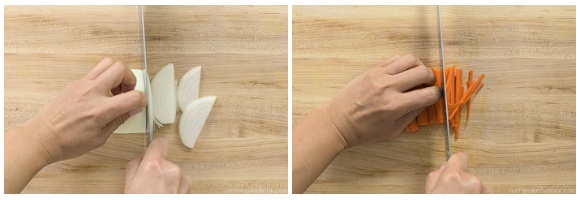
- Cut off the bottoms of 1.8 oz shimeji mushrooms and 2 shiitake mushrooms. Separate the shimeji mushrooms by hand into small clusters. Thinly slice the shiitake caps.
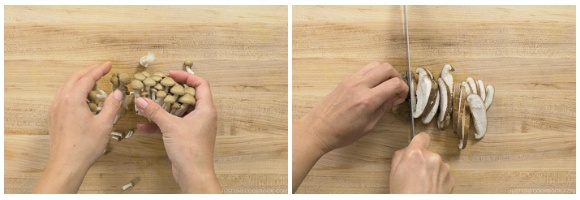
- Cut 2 leaves chives into small pieces.
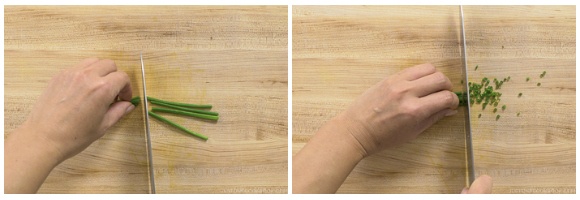
To Prepare the Foil Packets
- Prepare 2 sheets of aluminum foil, each 12 x 12 inches (30 x 30 cm). Divide ½ Tbsp unsalted butter and thinly spread it in the center of the foil sheets (reserve the remaining 1 Tbsp unsalted butter for later).
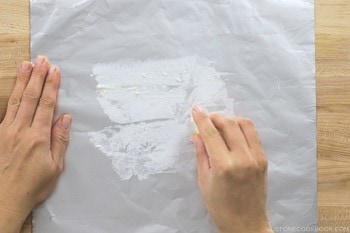
- For one foil packet, place one portion of the onion slices on the foil. Then, put one salmon fillet on top, skin side down.
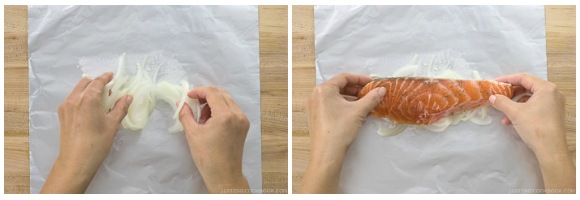
- Top with one portion of the mushrooms and carrot julienne strips.
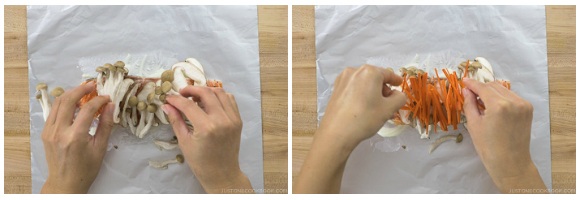
- Add ½ Tbsp sake and ½ Tbsp butter on top.
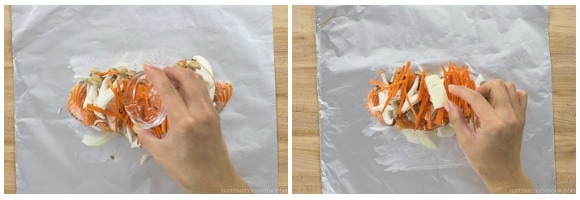
- Bring the top and bottom of the aluminum foil together over the salmon and fold a few times to close the top. Then, bring the sides together and fold a few times to tightly sealed the foil packet. Repeat the same process for the other fillet.
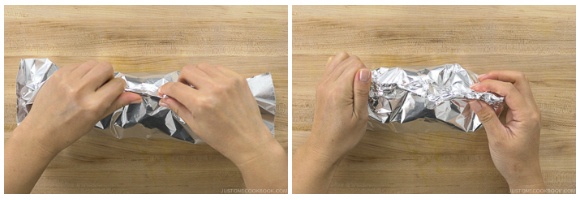
To Cook on the Stovetop
- Place the salmon foil packets in a frying pan and cover with a lid (no need to add water). Cook the salmon over medium heat for 2 minutes, then medium-low heat for 10 minutes. If your salmon is 1–1½ inches thick, cook for 15–18 minutes. Carefully open the foil packet (avoiding the hot steam) to check the doneness, if needed.
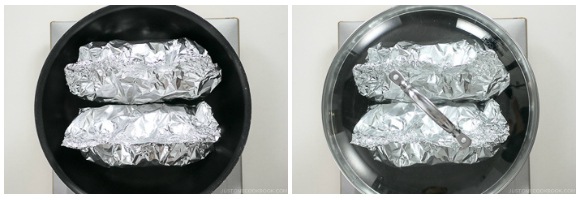
To Bake in the Oven (optional)
- Alternatively, you can bake in a preheated 425ºF (218ºC) oven for 15 minutes. For a convection oven, reduce the cooking temperature by 25ºF (15ºC). If your salmon is 1–1½ inches thick, bake for 18–20 minutes. Carefully open the foil to check the doneness.
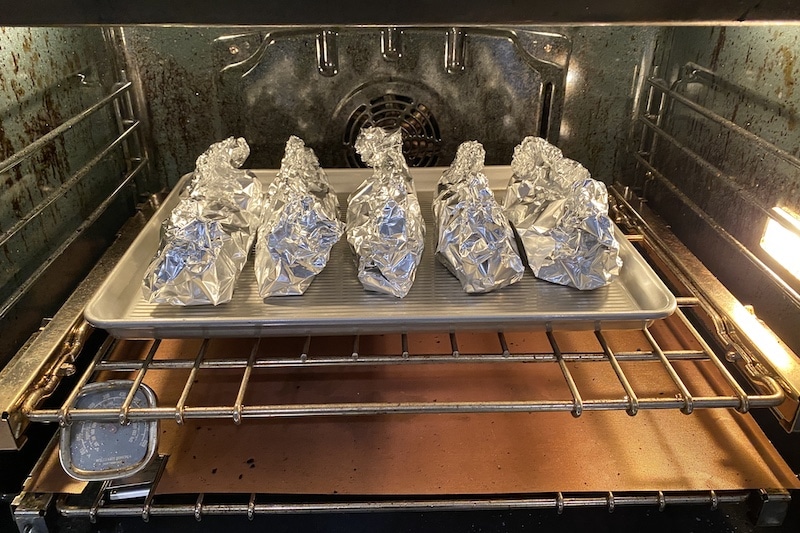
To Serve
- Carefully open the foil packets, avoiding the hot steam. Sprinkle with the chopped chives and drizzle each with 1 Tbsp ponzu or soy sauce. Enjoy!
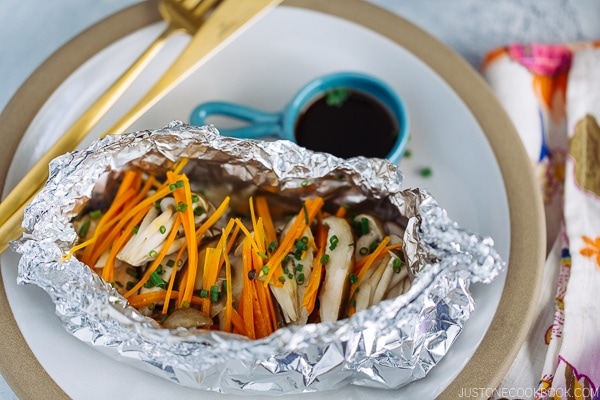
To Store
- You can keep the leftovers in an airtight container and store in the refrigerator for up to 3 days and in the freezer for 2 weeks.
Nutrition
Editor’s Note: This post was originally published on December 16, 2017. The post has been edited and republished in April 2020.
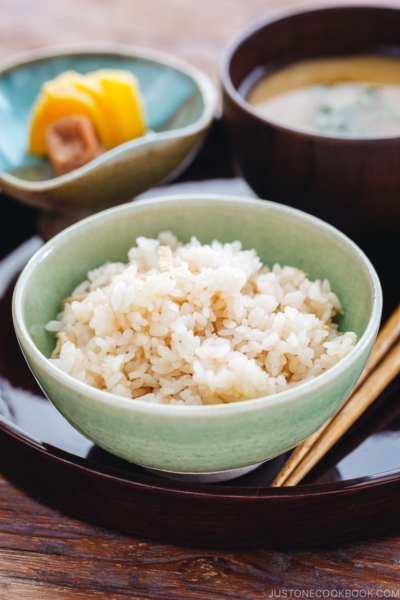
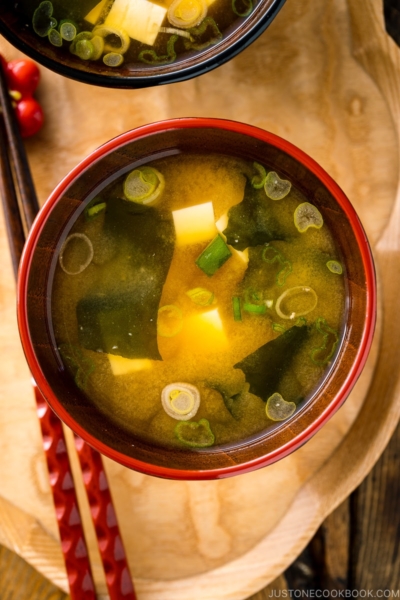
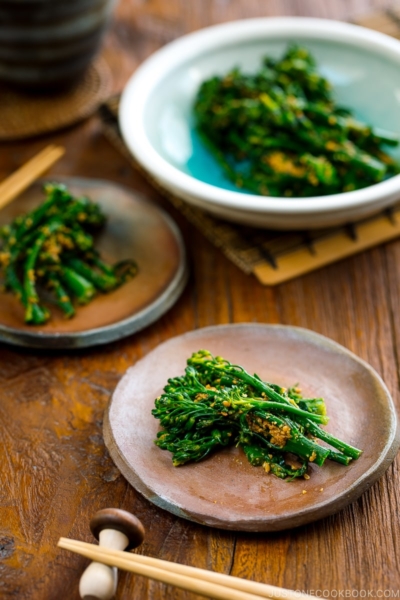
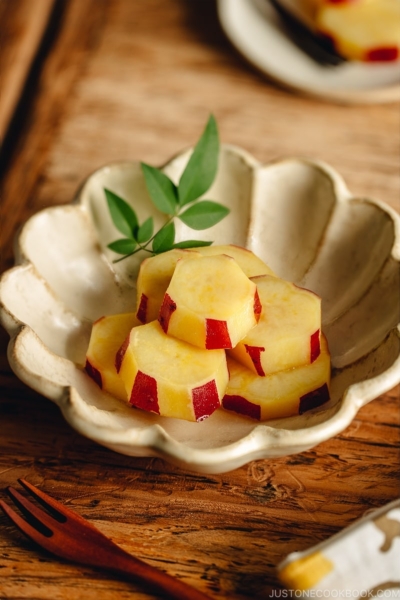




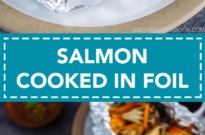
I love this recipe! It’s a keeper. Easy and delicious. Also, I’ve successfully made this recipe in parchment paper rather than foil, using the oven method. Folding it shut is a little different, but it is definitely doable. Just leaving this comment for anyone who prefers parchment over foil or doesn’t really buy foil for anything else! The only thing that matters is that your parchment is rated for up to that temperature, which most should be.
Hello, Lion! Thank you for trying Nami’s recipe and sharing your results!
We’re pleased to hear you enjoy this dish! Happy cooking!